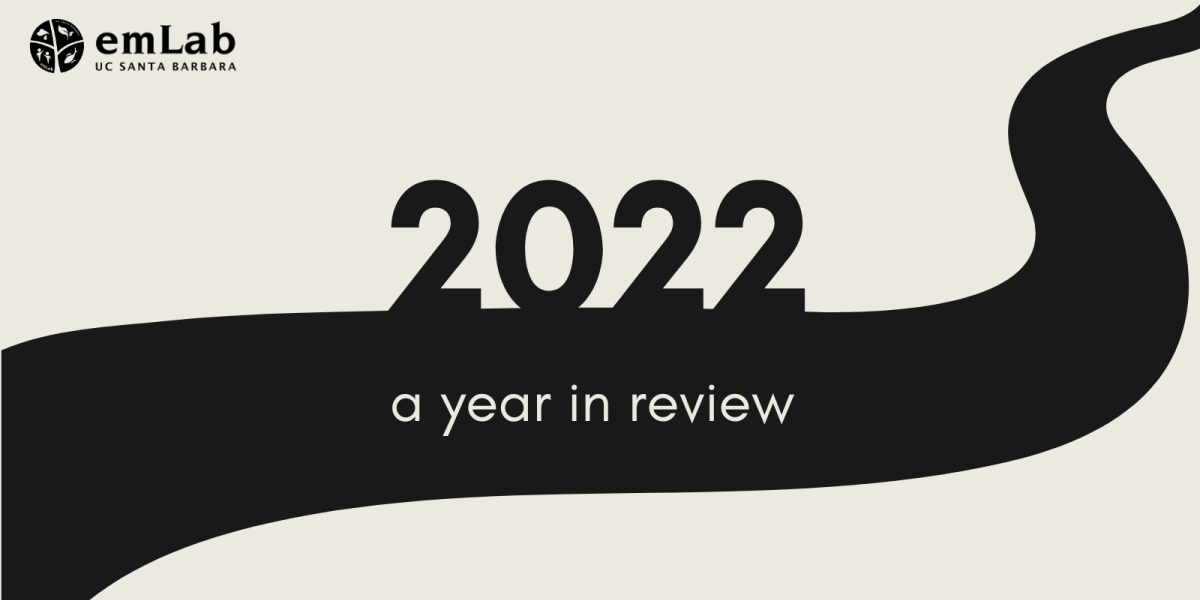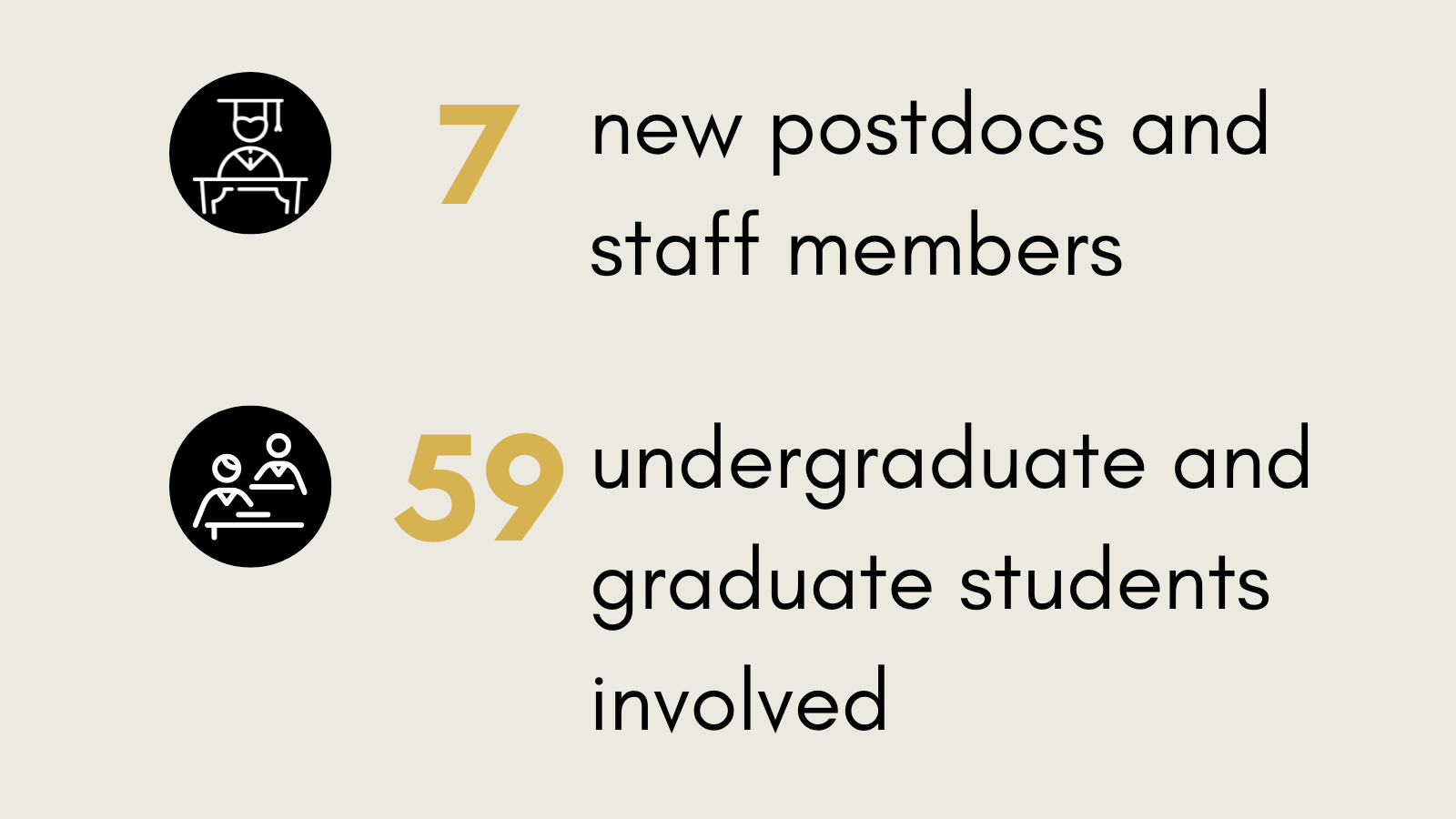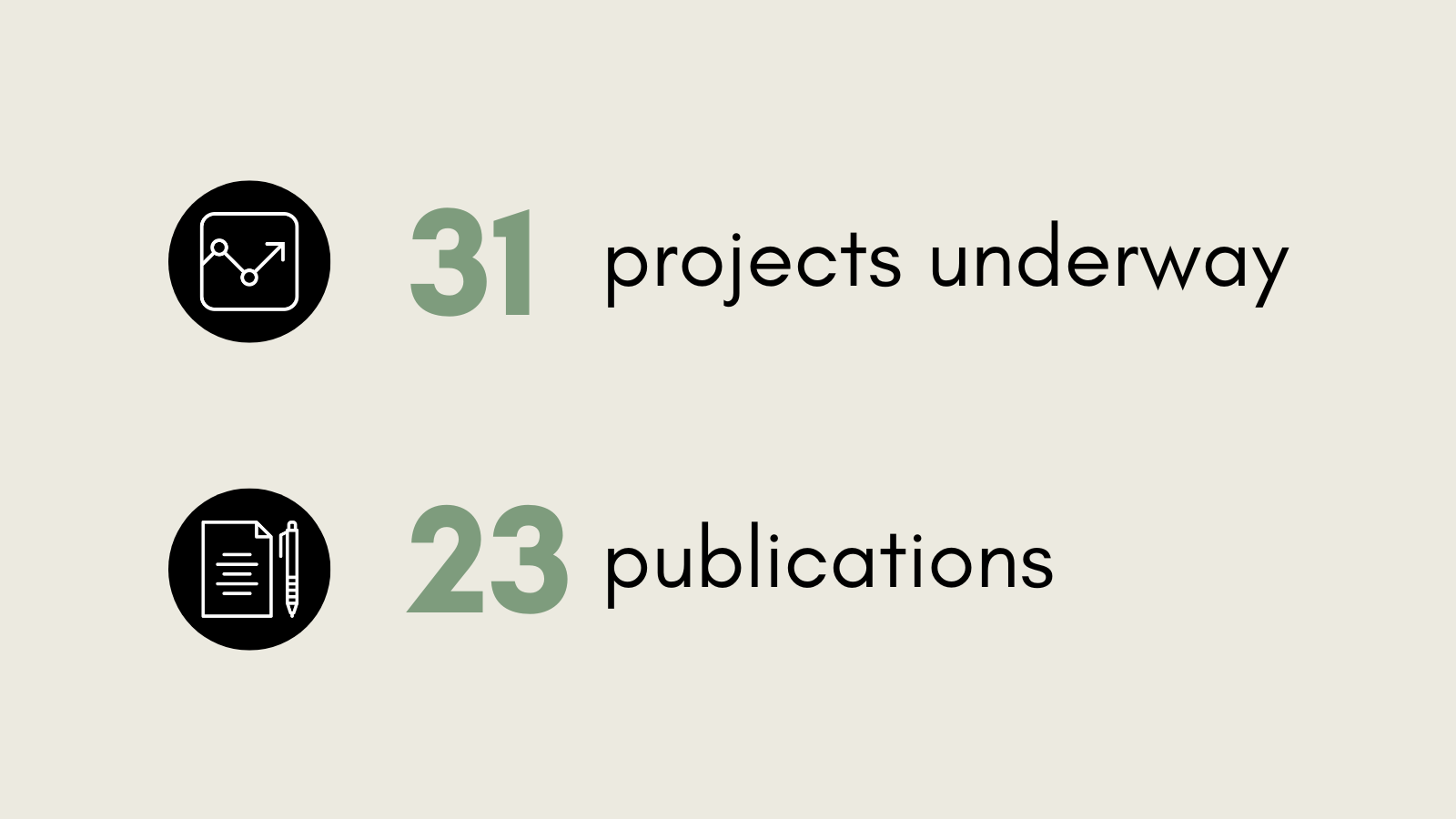
If there is one thing we can agree on, it’s that the last year has been a whirlwind. As we started emerging from the pandemic and our home offices, the pace of work and life seemed to launch into hyperdrive as travel picked back up, we started hosting visitors, planning and attending conferences, and began defining our new normal. We started working from our offices again, which has been exciting and energizing to collaboratively bounce ideas off of one another on white boards and also challenging to remember how to have proper conversations in person again. Our comfortability embracing uncertainty in research has permeated into all aspects of our lives and we are working together to redefine how we collaborate and support each other. We are incredibly proud of our team’s continued adaptability, tenacity, and empathy as we navigate our new normal together and want to take a moment to celebrate by sharing a few of our favorite accomplishments from this past year.
Community
We aim to foster a vibrant and diverse intellectual community that generates novel insights and inspires collaborative development and testing of new ideas. When asked about their motivation for being part of emLab, our Principal Investigators’ resounding answer was the community. This year our community expanded with new faces across the board, from leadership team members to collaborators and staff members:

While the pandemic brought with it creative team building activities and increased our remote collaboration acumen (e.g. virtual scavenger hunts, photo contests, becoming Zoom experts), it was a challenge to maintain our highly collaborative work dynamic. This fall we emerged from our Zoom screens to utilize our offices (2 days/week) as a tool for supporting connection, community, and culture across our team. The return of in-person whiteboard sessions and quick desk-side chats has been energizing, and we are continuing to evolve our hybrid approach in the ever changing work landscape. With the return to in-person activities, we saw the return of our personal favorite conference – the Occasional Workshop in Environmental and Resource Economics – as well as hosted 12 visiting scholars from around the world who brought new energy, excitement, and ideas to our team.
An especially energizing part of our work this past year was the expansion of our student community. We strive to contribute to and expand the academic community by mentoring a new generation of scientists whose diverse life experiences, interests, and talents will create a more innovative and inclusive academia. This year we had over 50 students work for us across a range of projects and topics from agricultural abandonment and natural climate solutions to science communications and marine protected areas. The students’ eagerness to learn has been infectious and we are looking forward to seeing their careers as environmental professionals unfold.
Innovative insights
emLab is dedicated to pioneering new research approaches and generating original and academically rigorous scientific findings, and we managed to generate a number of exciting insights this year:

But those aren’t the only exciting numbers we produced in 2022! Here’s a snapshot of key figures from some of our projects:
- $35 billion – The amount of funds collectively distributed each year to the fishing industry in the form of subsidies. There are a range of subsidies from beneficial (e.g. fishery management) to capacity-enhancing (e.g. fuel, vessel construction). Nearly $22 billion of the subsidies provided is thought to be in a form that incentivizes increased fishing. After decades of negotiations, this year the WTO came to an agreement to curb harmful fisheries subsidies and protect fish stocks. To aid in the negotiation process, we partnered with Pew to develop the SubsidyExplorer, a first-of-its-kind interactive decision support tool that allows users to explore potential biological and economic impacts of fisheries subsidy reform scenarios. The SubsidyExplorer provides an example of a tool that can be leveraged to overcome information gaps and support more effective evidence-based management.
- 2011 – The year in which Germany began its nuclear phase-out policy. To examine the long-term consequences of this 2011 decision, we developed a model that compares the phase-out policy as implemented and a counterfactual scenario where the nuclear reactors would have continued to operate. Using a wealth of data on electricity production, prices, and emissions from power plants, we found that lost nuclear electricity production was offset primarily by coal-fired production and net electricity imports. This added dependence on coal-fired production imposed large health costs on German residents, ranging from € 3-8 billion per year, mostly due to the increased mortality risk from local air pollution exposure. In addition, the phase-out led to higher wholesale electricity prices, impacting both residential consumers and businesses alike. While designing the optimal path for a low-carbon energy transition is complex, one lesson from Germany’s experience is that such complex decisions should be informed by data-driven estimates of all costs and benefits, especially the environmental and human health ones.
- 90% – The percent increase of the adoption of a rainwater harvesting technique following a simple training. Given degraded soils, poor rains, and the reduction of arable land, sustained yield improvements in Sahelian West Africa require intensive agricultural practices, including rainwater harvesting techniques that capture rainfall and reduce runoff. Uptake of rainwater harvesting techniques has remained low despite investments, so in partnership with Tufts we investigated how training and cash transfers affect the adoption of demi-lunes, a rainwater harvesting technique, in rural Niger. We found that a simple, one-day training significantly increased the adoption of demi-lunes, with persistent improvements in agricultural production and land use.
- 46 million – The number of tonnes of crude palm oil Indonesia produced in 2021, making it the world’s largest palm oil producer. Over the past 20 years, the expansion of oil palm plantations has been a major contributor to deforestation, accounting for one-third of the loss of Indonesia’s old-growth forest. In an effort to increase supply chain transparency, we partnered with Trase to build an extensive database that helps enable effective and transparent sustainability interventions by companies and governments. Through a new analysis we uncovered that deforestation for palm oil has declined significantly in recent years, with the greatest declines occurring in supply chains governed by zero-deforestation commitments. With 2.4 million hectares of intact forest remaining within Indonesia’s oil palm concessions, an opportunity for conservation and the continued reversal in deforestation trends remains.
Applied research
As a think-and-do tank, we pride ourselves in developing timely and implementable solutions through partnerships with local stakeholders, governments, NGOs, inter-governmental organizations, and foundations. Our work is developed in collaboration with implementing partners to help facilitate the science to solutions pathway, informing our research and resulting in real-world impact.

For over a decade we have provided scientific support for The Blue Prosperity Coalition, a network of global experts led by the Waitt Foundation and Waitt Institute who engage with governments around the world to implement marine spatial planning with a focus on conservation and development of sustainable blue economies. In 2022, amongst many activities, emLab conducted research to identify global hotspots of shark interactions with industrial longline fisheries, and participated in the development of Bermuda's draft marine spatial plan.
In 2022 we saw the fruitful growth of our partnership with Conservation International as part of the Arnhold UC Santa Barbara-Conservation International Climate Solutions Collaborative. This partnership supported 28 project team members and 24 undergraduate and graduate students across the two organizations this past year. These project teams and students are jointly undertaking six projects that span both land and ocean themes with the aim of developing solutions to bolster resilience to climate change. This past year, the project teams collectively worked across 13 countries and developed 10 scientific publications with the aim of producing robust scientific information to inform on-the-ground impact within and beyond these countries.
In our home state of California we partnered with the California Air Resources Board (CARB) to develop the Climate Vulnerability Metric, a framework for quantifying the impacts of a warming climate on human welfare. Announced as part of CARB’s 2022 Scoping Plan, the Climate Vulnerability Metric will ultimately help researchers, policymakers, and individuals better assess local-level climate risk and mitigate climate inequities across the State.
Looking forward
In defining our new normal for travel, work, and life, we know one thing that will remain the same – our dedication to innovating on market-based approaches to environmental challenges.
This past year we saw growth in our environmental justice portfolio from publishing a paper on the environmental justice implications of California's carbon market to being featured in a podcast about a just transition to a new low-carbon economy and launching a new project that supports Fulton, Missouri in building their community’s climate resilience while providing important community-based environmental justice experience to students. A highlight of the year was our 2-day workshop on innovative approaches to researching and addressing environmental injustices. We gathered a diverse group of scholars – including sociologists, environmental economists, and ethnic studies scholars – to discuss how to bring together different expertise, methods, and perspectives to inform equitable environmental solutions going forward. We are excited to build on this work and continue digging in to understand the distributional consequences of climate change impacts and policies, with the ultimate objective of designing equity-enhancing climate policies.
There are a multitude of new ideas and themes we are working on behind the scenes and can’t wait to share them with you all. We look forward to embracing 2023 with an attitude of ambitious possibility and seeing what the year has in store.




